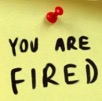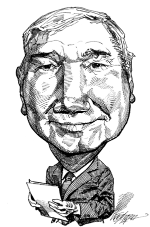Successor And Related Employer Obligations: Not Just For Unionized Employees
Sunday, August 31, 2014 - Filed in: Courts

In King v. 1416088 Ontario Ltd., Jack King ("King") successfully sued for wrongful dismissal damages against a group of companies that all traded under the "Danbury" name. King worked for more than 38 years for various companies trading under the Danbury name and provided services at one time or another for seven different corporate entities operating in the liquidation, valuation and auctioneering business.
At some points during his tenure, King did bookkeeping or other work for each of these entities. Since termination paperwork was never provided when the employer who paid King changed, the exact identity of his employer at various times throughout his tenure was uncertain.
King's claim arose following the termination of his employment in October 2011, when his then-current employer, Danbury Industrial, ceased trading. At that point, King and all of the other employees of that company were terminated without cause. King was the only individual who was not then offered employment with a new entity, DSL Commercial ("DSL"), which began operating under the Danbury trade name.
King's wrongful dismissal lawsuit was successful against DSL (which had never been his employer) as well as other Danbury entities owned or controlled by common individuals. The Court found numerous connections between DSL and King's previous employers. For instance, DSL and King's previous employers all conduced business under the Danbury trade name based on agreements with a common numbered company, which had the rights to that trade name, the businesses operated out of the same premises with common or similar management, and the businesses had the same telephone number. Thus, in finding DSL and the other related companies liable for the severance package payable to King, the Court determined that throughout King's tenure liability migrated from Danbury entity to Danbury entity. In addition, the Court found that all of the relevant Danbury entities were liable for the severance obligations.
Key Lessons For Employers
The applicability of the principles from this decision to typical commercial transactions is unclear. Although there were numerous "reorganizations" of the Danbury companies during King's tenure, none of these reorganizations were negotiated between arms-length parties nor were the changes of employer documented – both atypical commercial practices.
The argument that different parties who employed an individual during the course of his or her career, or were successors to those parties, should be liable to that individual is a novel approach to employment law claims. Consequently, this decision may bring increased focus to the appropriate manner of documenting allocation of liability and related notice to employees who are impacted by this allocation in asset sale transactions. At the very least, this decision highlights the importance of having evidence to support the position that a party has never been the employer of an individual, or has appropriate indemnification with respect to potential claims arising from alleged actual or common employment.
Note: This is a reprint of an article by George Waggott of McMillan LLP.


